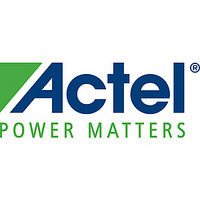AGLE600V2-FGG484 Actel, AGLE600V2-FGG484 Datasheet - Page 12

AGLE600V2-FGG484
Manufacturer Part Number
AGLE600V2-FGG484
Description
FPGA - Field Programmable Gate Array 600K System Gates
Manufacturer
Actel
Datasheet
1.AGLE600V2-FGG484.pdf
(158 pages)
Specifications of AGLE600V2-FGG484
Processor Series
AGLE600
Core
IP Core
Maximum Operating Frequency
526.32 MHz, 892.86 MHz
Number Of Programmable I/os
270
Data Ram Size
110592
Supply Voltage (max)
1.575 V
Maximum Operating Temperature
+ 70 C
Minimum Operating Temperature
0 C
Development Tools By Supplier
AGL-Icicle-Kit, AGL-Dev-Kit-SCS, Silicon-Explorer II, Silicon-Sculptor 3, SI-EX-TCA, FlashPro 4, FlashPro 3, FlashPro Lite
Mounting Style
SMD/SMT
Supply Voltage (min)
1.14 V
Number Of Gates
600 K
Package / Case
FPBGA-484
Lead Free Status / RoHS Status
Lead free / RoHS Compliant
Available stocks
Company
Part Number
Manufacturer
Quantity
Price
Company:
Part Number:
AGLE600V2-FGG484
Manufacturer:
Actel
Quantity:
135
Company:
Part Number:
AGLE600V2-FGG484I
Manufacturer:
Microsemi SoC
Quantity:
10 000
IGLOOe Device Family Overview
1 - 6
The FlashROM can be programmed via the JTAG programming interface, and its contents can be read
back either through the JTAG programming interface or via direct FPGA core addressing. Note that the
FlashROM can only be programmed from the JTAG interface and cannot be programmed from the
internal logic array.
The FlashROM is programmed as 8 banks of 128 bits; however, reading is performed on a byte-by-byte
basis using a synchronous interface. A 7-bit address from the FPGA core defines which of the 8 banks
and which of the 16 bytes within that bank are being read. The three most significant bits (MSBs) of the
FlashROM address determine the bank, and the four least significant bits (LSBs) of the FlashROM
address define the byte.
The Actel IGLOOe development software solutions, Libero
Designer, have extensive support for the FlashROM. One such feature is auto-generation of sequential
programming files for applications requiring a unique serial number in each part. Another feature allows
the inclusion of static data for system version control. Data for the FlashROM can be generated quickly
and easily using Actel Libero IDE and Designer software tools. Comprehensive programming file support
is also included to allow for easy programming of large numbers of parts with differing FlashROM
contents.
SRAM and FIFO
IGLOOe devices have embedded SRAM blocks along their north and south sides. Each variable-aspect-
ratio SRAM block is 4,608 bits in size. Available memory configurations are 256×18, 512×9, 1k×4, 2k×2,
and 4k×1 bits. The individual blocks have independent read and write ports that can be configured with
different bit widths on each port. For example, data can be sent through a 4-bit port and read as a single
bitstream. The embedded SRAM blocks can be initialized via the device JTAG port (ROM emulation
mode) using the UJTAG macro.
In addition, every SRAM block has an embedded FIFO control unit. The control unit allows the SRAM
block to be configured as a synchronous FIFO without using additional core VersaTiles. The FIFO width
and depth are programmable. The FIFO also features programmable Almost Empty (AEMPTY) and
Almost Full (AFULL) flags in addition to the normal Empty and Full flags. The embedded FIFO control
unit contains the counters necessary for generation of the read and write address pointers. The
embedded SRAM/FIFO blocks can be cascaded to create larger configurations.
PLL and CCC
IGLOOe devices provide designers with very flexible clock conditioning capabilities. Each member of the
IGLOOe family contains six CCCs, each with an integrated PLL.
The six CCC blocks are located at the four corners and the centers of the east and west sides. One CCC
(center west side) has a PLL.
The inputs of the six CCC blocks are accessible from the FPGA core or from one of several inputs
located near the CCC that have dedicated connections to the CCC block.
The CCC block has these key features:
Additional CCC specifications:
•
•
•
•
•
•
•
•
•
•
Wide input frequency range (f
Output frequency range (f
2 programmable delay types for clock skew minimization
Clock frequency synthesis
Internal phase shift = 0°, 90°, 180°, and 270°. Output phase shift depends on the output divider
configuration.
Output duty cycle = 50% ± 1.5% or better
Low output jitter: worst case < 2.5% × clock period peak-to-peak period jitter when single global
network used
Maximum acquisition time is 300 µs
Exceptional tolerance to input period jitter—allowable input jitter is up to 1.5 ns
Four precise phases; maximum misalignment between adjacent phases of 40 ps × 250 MHz /
f
OUT_CCC
OUT_CCC
IN_CCC
) = 0.75 MHz up to 250 MHz
) = 1.5 MHz up to 250 MHz
R e vi s i o n 8
®
Integrated Design Environment (IDE) and













